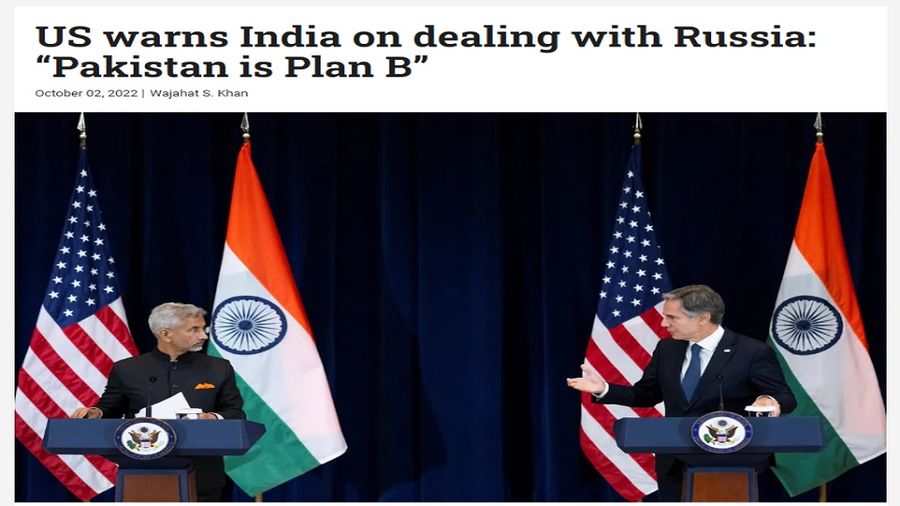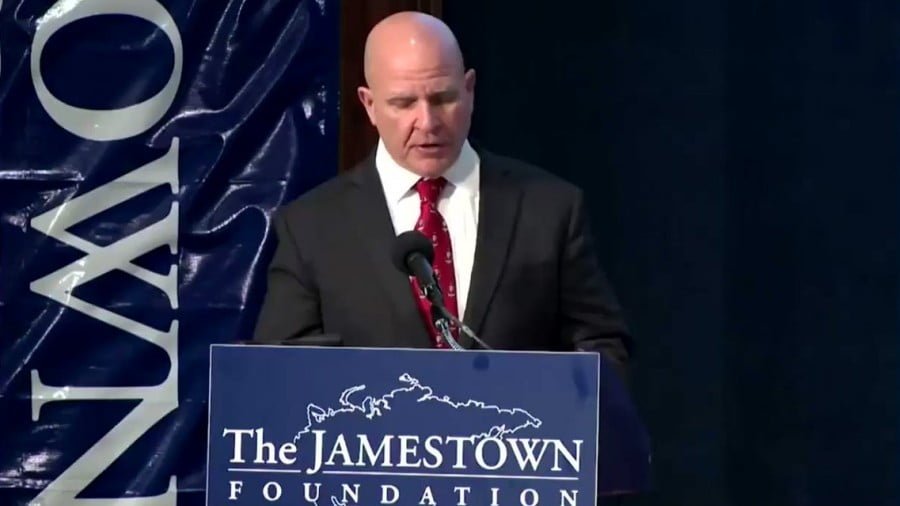GZERO Media’s USG-Financed Experts Are Wrong About the US Seeking to “Balance” South Asia
Far from trying to “balance” South Asia, the US is actively seeking to destabilize it by speeding up the region’s grand strategic reorientation that it envisages resulting in Pakistan’s transformation from the “Zipper of Eurasia” for facilitating multipolarity to the “Faultline of Eurasia” for obstructing it.
GZERO Media, the online information outlet founded by the Eurasia Group’s Ian Bremmer, published a piece over the weekend about how “US warns India on dealing with Russia: ‘Pakistan is Plan B’”. Citing experts like the Rand Corporation’s Derek Grossman, the Atlantic Council’s Uzair Younis, and the Wilson Center’s Michael Kugelman – whose institutions are all partially financed by the US Government (USG) despite this fact not being disclosed in the text – the article’s primary angle is that American strategy towards South Asia has returned to balancing India and Pakistan. This policy recalibration is regarded as the result of Delhi’s refusal to distance itself from Moscow and Islamabad’s recent pro-US overtures.
I explained the first of these factors in my response to Happymon Jacob’s latest article for the hugely influential Council on Foreign Relations’ Foreign Affairs magazine. It lists and hyperlinks to over a dozen of my prior analyses about the convergence between Indian and Russian grand strategy in the ongoing global systemic transition to multipolarity. My response, which can be read here, should be reviewed by those who seek a deeper understanding of these dynamics beyond the specious explanations shared by those partially USG-financed experts. As for Pakistan’s pro-US overtures, these are the result of a US-orchestrated post-modern coup, which GZERO Media doesn’t mention.
I also explained the sequence of events leading to that foreign-influenced but domestically driven regime change in a detailed interview that I gave to Pakistani media over the summer, which can be read here. Taken together, the three trends of: India proudly reaffirming its strategic autonomy in what can indisputably be described as the New Cold War after President Putin’s historic speech last Friday (which amounted to a global revolutionary manifesto); Pakistan’s US-backed post-modern coup regime actively reaching out to America; and that declining unipolar hegemon deciding to “balance” both regional partners, collectively accelerate South Asia’s grand strategic reorientation.
I wrote about the global consequences of these shifts, which can be summarized as India working more closely with its Russian and Chinese partners in the RIC core of BRICS to gradually reform International Relations in a multipolar direction while Pakistan’s post-modern coup regime prepare to collude with the US to obstruct the fruits of their cooperation, in an extensive analysis that can be read here. In brief, the resultant friction is turning South Asia into perhaps the most significant theater of the New Cold War when it comes to determining the course of the global systemic transition. Simply put, the future of the world order is disproportionately being determined in this part of the supercontinent.
GZERO Media’s article leaves readers with the impression that while the US is indeed turning to Pakistan as its “Plan B” in response to India refusing to condemn and sanction Russia, the policy of which I describe as this Great Power declining to unilaterally concede on its objective national interests and thus voluntarily submit to becoming America’s “junior partner”, Washington isn’t really trying to punish Delhi so much as restore some sense of strategic balance to South Asia. In other words, India is misportrayed as behaving irresponsibly, which supposedly prompted the US to more actively engage with what’s spun as the comparatively more responsible authorities in Pakistan.
The reality is actually very different no matter how compelling the explanation shared by GZERO Media’s partially USG-financed experts might speciously seem. Far from trying to restore strategic balance in South Asia, the US is trying to subvert it through the successful “poaching” of Pakistan via the post-modern coup that it orchestrated in early April as punishment for former Prime Minister Imran Khan’s independent foreign policy (and especially the Russian dimension thereof that I described here). This was driven by the desire to subvert the combined impact of his and Indian Prime Minister Narendra Modi’s multipolar grand strategies on their geostrategic region.
After successfully neutralizing the Pakistani part of these larger processes that it considered to be a latent threat to its already declining unipolar hegemony over the international system, the US then began working to influence that country to return to its traditional role in South Asia as an American proxy. This has thus far taken the form of the post-modern coup regime informally agreeing to allow US drones to transit through its airspace en route to Afghanistan, not to mention drastically decelerating the pace of its previously rapid rapprochement with Russia over the past half-decade that I described in a summer 2020 article for a top Russian think tank here and in my fall 2022 MGIMO PhD. here.
The next phase of this America’s envisaged grand strategic reorientation in South Asia is already in progress, and that concerns strengthening conventional military cooperation between it and Pakistan, particularly through the contentious revival of the previously scrapped F-16 deal that’s irked India and prompted credible suspicions from Delhi that this is part of an emerging US containment plot against it. Nevertheless, America also wants to continue closely cooperating with India on military-strategic matters related to their shared concerns over China’s rise, ergo why their top diplomats just reaffirmed their desire to further elevate their relations.
Even so, however, I recently argued that “The Ukrainian Conflict Might Have Already Derailed China’s Superpower Trajectory” due to four primary reasons that are elaborated on in the preceding hyperlink. These will lead to India’s distrust of China becoming less upon the People’s Republic recalibrating its present superpower-aspiring grand strategy to settle for becoming the most economically powerful Great Power in a system of complex multipolarity (“multiplexity”) instead. That outcome will make the growing military-strategic importance of Indian-US ties moot, especially if India and China reach a “new normal” in their relations that results in them jointly cooperating to build the Asian Century.
That last-mentioned concept refers to the multipolar future that those Asian Great Powers’ representatives reaffirmed their interest in pioneering back in late August. It implies a comprehensive improvement of their bilateral relations so that their somewhat unfriendly, harsh, and hostile zero-sum competition with each other transforms into a friendly, gentle, and non-hostile mutually beneficial one instead. This scenario trajectory is inadvertently being accelerated by the US’ “Plan B” of returning to its traditional reliance on a Pakistani puppet state as its platform for exerting regional hegemon instead of being offset by what GZERO Media’s partially USG-funded experts misportray as a “balancing act”.
Those observers that are aware of these strategic dynamics as they objectively exist will therefore likely reach a different conclusion than the one suggested in the article that was just analyzed in the present piece. Far from trying to “balance” South Asia, the US is actively seeking to destabilize it by speeding up the region’s grand strategic reorientation that it envisages resulting in Pakistan’s transformation from the “Zipper of Eurasia” for facilitating multipolarity to the “Faultline of Eurasia” for obstructing it. The trade-off is that the more that America moves everything in this direction, the more likely it is that India will comprehensively strengthen its cooperation with Russia and China, which could ultimately lead to serious friction in this part of the world as the global systemic transition continues to unfold.







